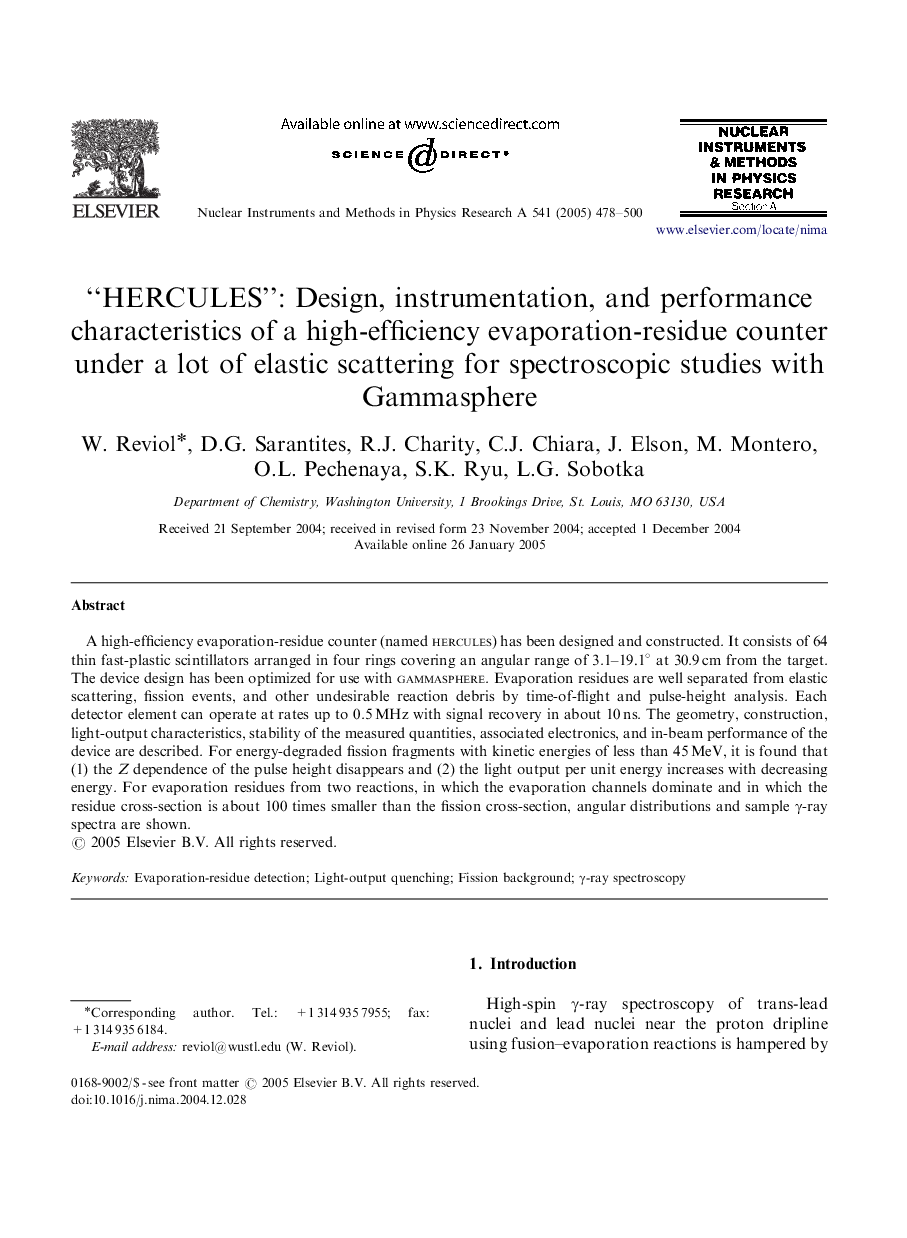| Article ID | Journal | Published Year | Pages | File Type |
|---|---|---|---|---|
| 10717147 | Nuclear Instruments and Methods in Physics Research Section A: Accelerators, Spectrometers, Detectors and Associated Equipment | 2005 | 23 Pages |
Abstract
A high-efficiency evaporation-residue counter (named HERCULES) has been designed and constructed. It consists of 64 thin fast-plastic scintillators arranged in four rings covering an angular range of 3.1-19.1â at 30.9 cm from the target. The device design has been optimized for use with GAMMASPHERE. Evaporation residues are well separated from elastic scattering, fission events, and other undesirable reaction debris by time-of-flight and pulse-height analysis. Each detector element can operate at rates up to 0.5 MHz with signal recovery in about 10 ns. The geometry, construction, light-output characteristics, stability of the measured quantities, associated electronics, and in-beam performance of the device are described. For energy-degraded fission fragments with kinetic energies of less than 45 MeV, it is found that (1) the Z dependence of the pulse height disappears and (2) the light output per unit energy increases with decreasing energy. For evaporation residues from two reactions, in which the evaporation channels dominate and in which the residue cross-section is about 100 times smaller than the fission cross-section, angular distributions and sample γ-ray spectra are shown.
Keywords
Related Topics
Physical Sciences and Engineering
Physics and Astronomy
Instrumentation
Authors
W. Reviol, D.G. Sarantites, R.J. Charity, C.J. Chiara, J. Elson, M. Montero, O.L. Pechenaya, S.K. Ryu, L.G. Sobotka,
